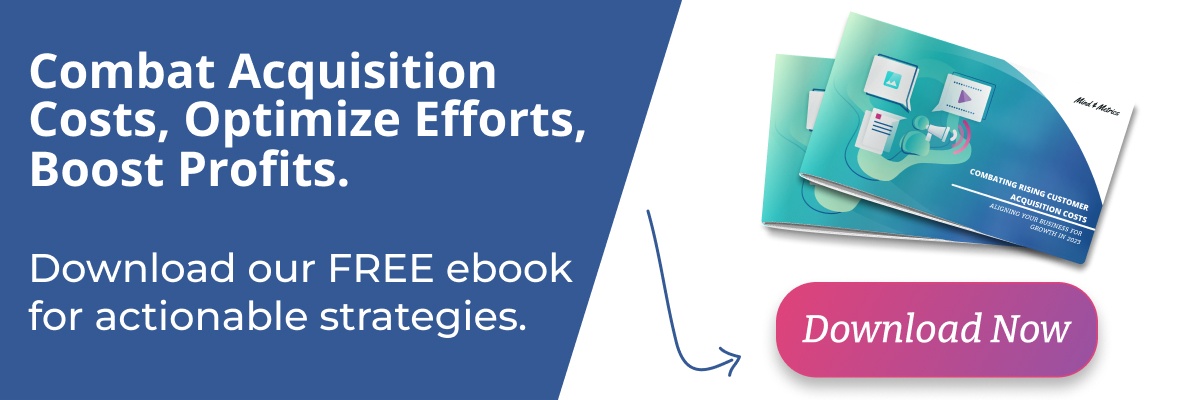Experience firsthand how Mind & Metrics + Supered.io can help your business streamline execution, eliminate unnecessary back-and-forth, and ensure AI accelerates growth—without the chaos.
8 Reasons Your Start-Up Strategy Isn't Drawing Customers
Just over 50% of startup businesses fail within their first four years. That number is pretty frightening, especially when you think of the money and time you're investing in your business.
If you're not bringing in enough revenue while watching cash disappear, you don't have much time. It's important to quickly determine the issue so you can realign your marketing strategy.
Digital marketing has provided businesses with countless channels to reach potential customers. With that comes the need to plan your marketing campaign every step of the way.
If your startup strategy isn't drawing customers, the first step is to figure out what's not working.
To help you out, we've pinpointed eight reasons startups fail to bring in business. It may be time for some minor tweaks or a major overhaul.
1. Your Promotion Strategy Is out of Whack
Producing quality marketing content for your business is just the first step. Unfortunately, many businesses stop there, thinking that it will magically get in front of the right eyes.
Simply creating marketing content won't bring in business. You have to promote it correctly.
It's important you know your audience in order to know how to reach them. This requires some testing.
If your target audience is younger, you need to be using social media to promote blog articles and product information. An older audience may respond better to email marketing.
The right startup strategy depends on you testing which channel your customers prefer to be reached by. It doesn't matter how good your content is if you're putting it in the wrong places.
2. Poor Marketing Content
Maybe you are, in fact, promoting your marketing content in the right places. Then why are you still failing to bring in new business?
The quality of your marketing content could be the issue. It's understandable that many startups want to cut costs, but hiring cheap writers will inevitably result in ineffective content.
Blog articles and web content shouldn't just inform people about the business, it needs to engage the audience. It's too easy for people to click away from boring content, and they will.
Hiring a good content marketer who can analyze your current startup strategy and spice up your content will work wonders.
3. Your Product-Market Fit is Off
This is a big reason many startups fail. Your product needs to align with the wants and needs of your target customer. If it doesn't, it won't matter how good your marketing strategy is.
To realign your product-market fit, you need to do some testing. Customer feedback will provide you with the information you need to modify the product or services you sell.
A good approach is to create a minimum viable product. This is a product that contains just enough features to satisfy customers. The initial feedback from this can then influence further development of the product.
Over time, you'll be able to establish a healthy product-market fit and be selling something your audience truly needs.
4. Bad SEO
You simply must have quality SEO in place to compete today. SEO works alongside your content marketing to help it reach your target audience.
SEO techniques help you rank well in search engines. They also help you get in front of the right eyes. These are the people who live in your area and need your services.
Your content can be rock-solid, but without SEO, nobody will find it. If your startup strategy has neglected search engine optimization, you're running the risk of missing out on countless potential customers.
Hiring an SEO consultant could quickly turn a lagging business into a successful enterprise.
5. Unrealistic Expectations
One thing every startup needs to understand is that success takes time. When it comes to your startup strategy, you need to be patient. Don't change something because it doesn't bring results overnight.
When it comes to marketing content, you have to understand that you're probably not going to triple your web traffic right away. The important thing is to remain aware of the gradual improvements and be satisfied with them.
Unrealistic expectations will cause unneeded frustrations. This leads to making rash changes to a strategy before it's had a chance to work.
In some cases, slow and steady wins the race.
6. You're Not Looking at the Data
Content marketing should not be a guessing game. In fact, guessing how to market effectively often leads to failure.
Who is finding you online? How are they finding you? These things can be measured, so why not take advantage of the data.
It's also essential to look at what your target audience cares about most. Using blogs and social media can get you involved in the topics your target audience are seeking out.
By looking at regular traffic reports and learning what content is successful, you can tailor your future marketing efforts. Knowing what's working is invaluable information.
7. The Ideal Customer Profile Isn't Clear
Creating an ideal customer profile is a must for every startup strategy. This is the precise definition of the individual you're targeting.
Your customer profile tells you where your audience is and how to speak their language. This is part of the foundation of your sales initiative. Every person in the company should be familiar with it.
If there's a misunderstanding within the company regarding your ideal customer, you'll run into problems creating an appropriate customer experience.
8. A Bad Pricing Strategy
Your pricing strategy plays into your ideal customer profile. Are you offering a product or service that your ideal customer can afford? If not, drastic changes need to be made.
Your customer has to see the value in your product. It has to make sense to them, or they will simply go somewhere else.
Creating a good customer profile will help determine the socio-economic status of your audience. This may influence changes in your pricing strategy.
A Startup Strategy That Works
Not only will a good startup strategy help bring in business, it will teach you how to grow as a company. Every young business learns by making mistakes, but some mistakes are too costly to recover from.
Now that you have a better idea of customer strategy, why not continue and learn about how to combat rising customer acquisition costs? Download our free resource today:

